Duplicate data in Google Sheets can cause confusion and inaccuracies in your spreadsheets. Identifying and highlighting these duplicates is essential for maintaining data integrity and ensuring accurate analysis.
Highlighting Entire Rows with Duplicate Data
When working with extensive spreadsheets that contain interconnected data across multiple columns, it's often more effective to highlight entire rows that contain duplicate values in a specific column. This ensures that any duplicate entries are easily noticeable, even if the duplicate cell is not currently visible on your screen.
Step 1: Select all the cells (both rows and columns) where you want to apply the conditional formatting.
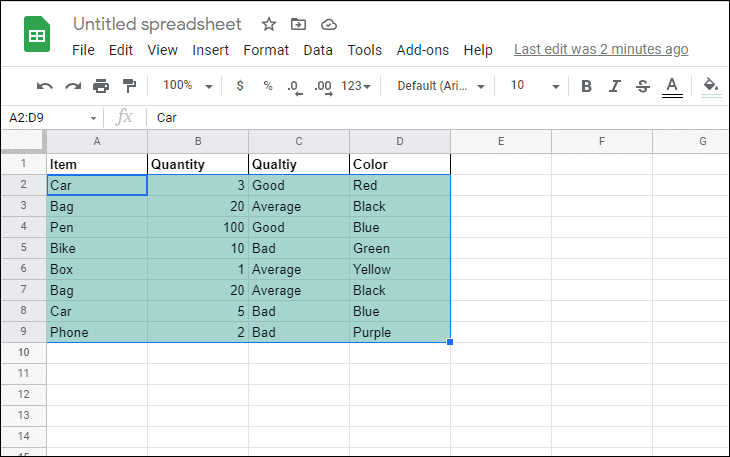
Step 2: Click on the Format menu at the top and choose Conditional formatting from the dropdown.
Step 3: In the Conditional Formatting pane that appears on the right, remove any existing conditional formatting rules if necessary. Then, click on Add another rule at the bottom.
Step 4: Ensure that the Apply to range field displays the correct range of cells you've selected. Under the Format cells if section, select Custom formula is from the dropdown menu.
Step 5: Input the following formula into the text box:
=countif($A$2:$A$9,$A2)>1This formula checks for duplicate values in column A. The dollar signs ($) ensure that the formula references the correct column and rows absolutely.
Step 6: Choose a formatting style for the duplicates, such as a fill color, by selecting the desired option under the Formatting style section. Then, click Done to apply the rule.
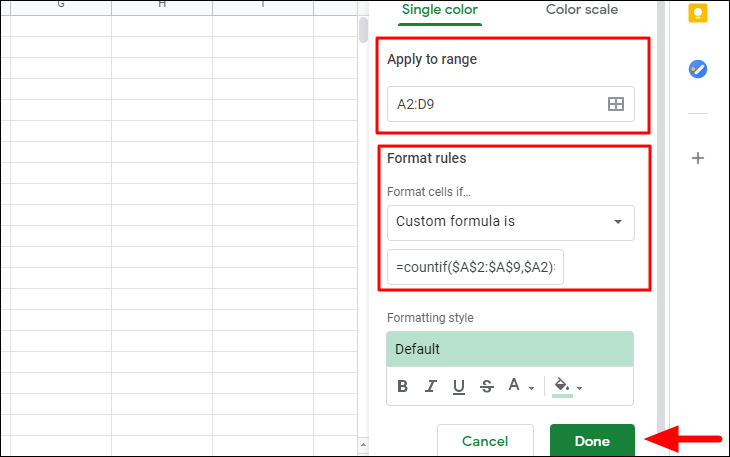
The entire rows containing duplicate entries in column A are now highlighted, making them easy to spot.
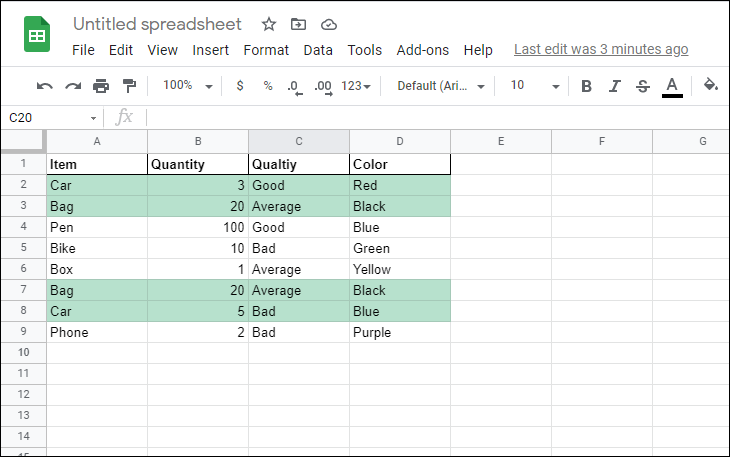
You can adjust the formula to check for duplicates in other columns by replacing $A$2:$A$9 and $A2 with the appropriate column references.
Highlighting Duplicate Cells in a Column
If you prefer to highlight only the duplicate cells within a specific column, you can achieve this using conditional formatting as well. This method is useful when you need to focus on duplicates in a single column without highlighting entire rows.
Step 1: Select the range of cells in the column where you want to find duplicates.
Step 2: Go to the Format menu at the top and click on Conditional formatting.

Step 3: In the Conditional Formatting pane, ensure the Apply to range field reflects the correct cells selected. Under the Format cells if section, choose Custom formula is from the dropdown menu.

Step 4: Enter the following formula in the text box:
=countif($A$2:$A$9,A2)>1This formula counts how many times each value appears in the range and highlights the cells where the count is greater than one.
Step 5: Select a formatting style, such as a fill color, to highlight the duplicate cells. Click Done to apply the conditional formatting rule.

The duplicate cells within the selected column are now highlighted with the formatting you chose.
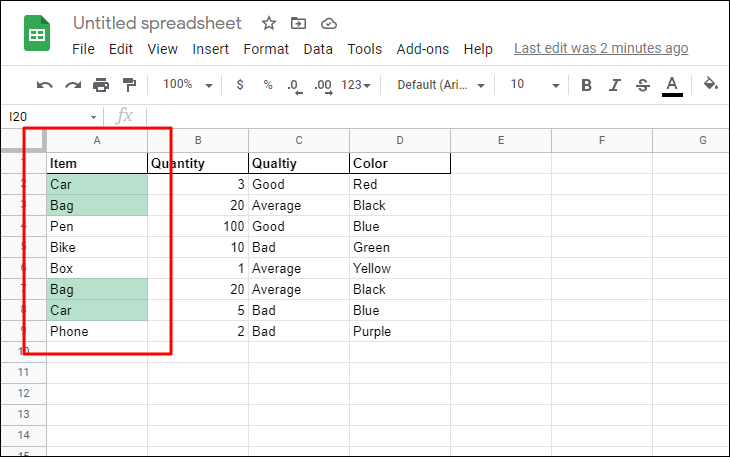
Removing Duplicate Data in Google Sheets
If you need to eliminate duplicate entries entirely, Google Sheets provides a built-in feature to remove them quickly. This method is efficient for cleaning up your data without manually deleting each duplicate row or cell.
Step 1: Highlight the range of cells where you want to remove duplicates.
Step 2: Click on the Data menu at the top and select Remove duplicates from the dropdown.

Step 3: In the dialog box that appears, choose the columns you want to analyze for duplicates. You can select Select all to consider entire rows or tick specific columns to check for duplicate values in those columns.
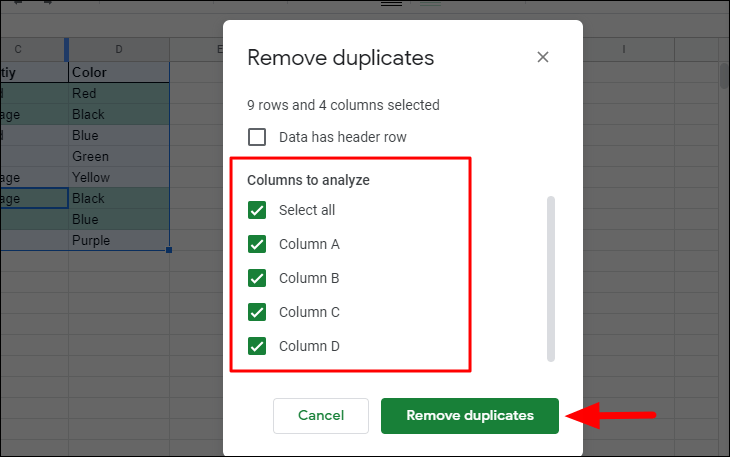
Step 4: Click on Remove duplicates at the bottom of the dialog box. Google Sheets will process the data and inform you of how many duplicate rows were removed and how many unique rows remain.

Step 5: Click OK to close the dialog box.
The duplicate data has now been removed from your selected range, streamlining your spreadsheet.
By effectively highlighting or removing duplicate data in Google Sheets, you can maintain clean and accurate spreadsheets. Utilizing these methods saves time and reduces errors, allowing you to focus on analyzing unique data entries.

